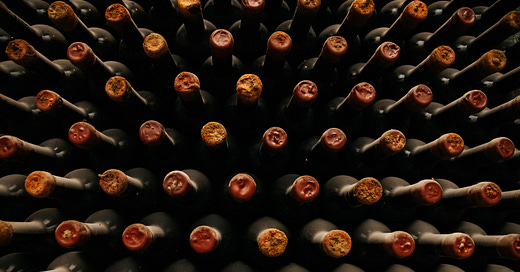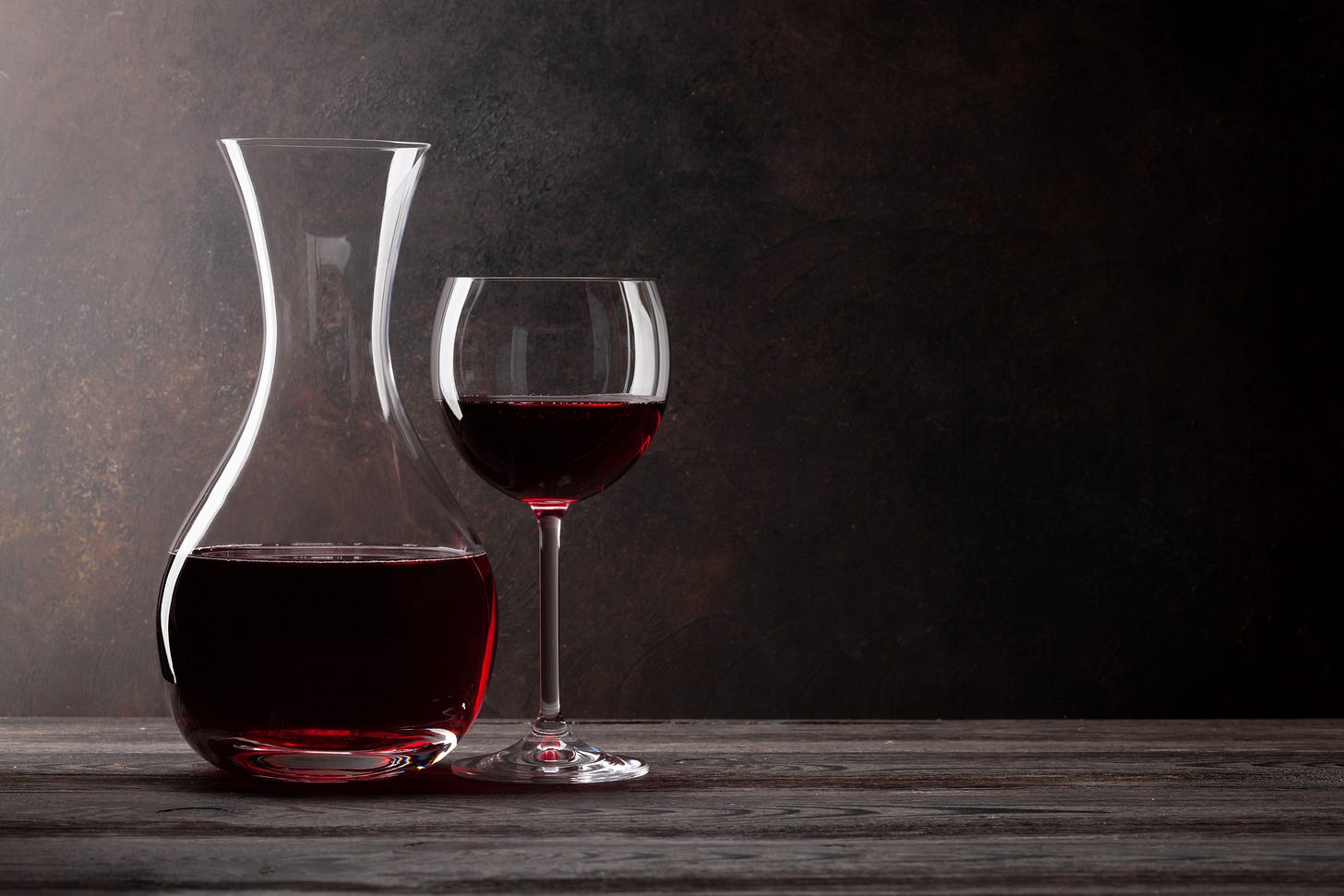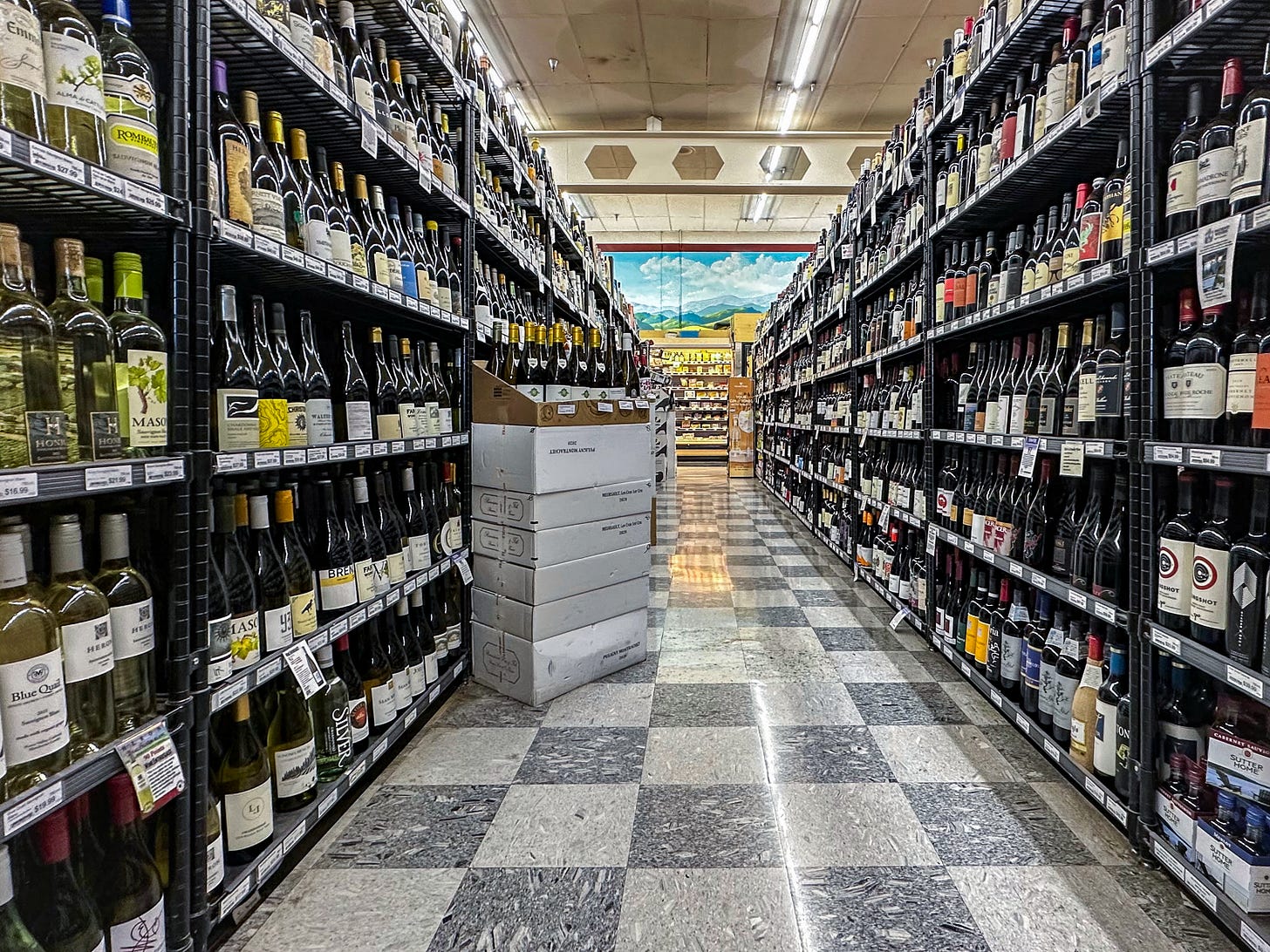As 2023 draws to a close, we're dedicating the final two weeks to a retrospective countdown of the year's most-read stories. Spanning a broad spectrum of subjects, these pieces mirror the varied curiosities of our audience and pave the way for an exciting 2024. Join us as we revisit these highlights.
Original run date: Sept. 16, 2023
NAPA VALLEY, Calif. — Amid a landscape of geopolitical unrest, economic volatility and a pandemic that has fundamentally shifted consumer behavior, the Napa Valley wine industry navigates a complex array of challenges and shifts. Small family-owned wineries find themselves grappling not just with broader economic factors but also with an increasingly consolidated industry landscape. As Wall Street shifts toward backing the biggest names in the business, privately held corporations seek to extend their influence, while new regulatory measures aim to reinvigorate competition. This leaves us with an urgent question: What does the future hold for these smaller wineries in a market increasingly overshadowed by corporate giants?
A little history
By the late 1960s and early '70s America had become infatuated with fine wines, including those from France and Italy as well as California. Articles in the popular press during this time identified the growing population, increases in disposable income and a burgeoning appreciation for fine food as key factors driving an unprecedented period of wine consumption.
In an influential article published in Wines and Vines in September 1970, John Knechel, a Bank of America economist, predicted, "Over the next 10 years, California vintners will enjoy the strongest growth in wine markets ever recorded."
Knechel predicted that annual wine consumption in the United States would double from around 1 gallon per resident to 2 gallons over a decade. His forecast turned out to be spot-on. According to the Wine Institute, per capita wine consumption was a mere 1.17 gallons in 1969 but rose to 2.11 gallons per resident by 1980. While there was a dip in consumption during the mid-1990s, it bounced back to 2.94 gallons per person by 2016. Remarkably, the United States led global wine consumption in that year, followed by France, Germany and Italy. Nonetheless, owing to the United States' larger population — 323.1 million in 2016 compared to France's 66.9 million — per capita wine consumption remained higher in most European countries. As of 2022, U.S. wine consumption has receded to 2.86 gallons, marking a downward trend.
The surge of interest and demand in the Napa Valley during the early 1970s led to a "gold rush" of sorts, attracting mainly younger individuals eager for either a back-to-the-land or European lifestyle. Many flocked to the area to make wine. Fast-forward to 2023 and the original bohemian spirit that fueled those early ventures has mostly either faded away or been absorbed into larger business entities. For instance, most wineries established in 1972 have since been sold or dissolved. Only a few stalwarts such as Jordan, Château Montelena, Silver Oak, Dry Creek, or Smith-Madrone (founded in 1971), Fisher Family (1973) and Spotteswoode (founded in 1972, making its own wine since 1982) and maybe a few others continue to operate independently.
The changing landscape
Long considered the domain of artisans and connoisseurs, many smaller Northern California wineries have attracted increased attention from Wall Street, private equity firms and larger corporations over the last decade. Many of the original entrepreneurs — or their children — welcome this attention, often viewing it as an opportunity to exit a challenging industry. For some, the industry feels more like a mashup where agriculture meets luxury products and fickle consumers rather than the romanticized notion of a vintner crafting wine to cellar for the ages.
To acquire these originally family-owned operations, big businesses employ a variety of methods, including outright purchases. Others seek investment through private equity firms, mergers and acquisitions, partnerships or by issuing initial public offerings on various stock exchanges.
Wall Street and the Napa Valley: unlikely bedfellows
In recent years Vintage Wine Estates of Santa Rosa and Napa Valley's Duckhorn Vineyards have become publicly traded companies, aiming to defy the long-standing trend of smaller wine companies struggling on Wall Street.
Historical experiences in the wine industry serve as cautionary tales. The Robert Mondavi Winery went public in 1993 but faced numerous challenges that hindered its growth and was eventually sold for a record-breaking $1.03 billion in 2004. Ravenswood, famous for its zinfandel, went public in 1999 but experienced stalled growth and was acquired by Constellation Brands for $148 million in 2001 (the Ravenswood brand was recently sold again, this time to Gallo in 2021, along with 29 other brands, for $1.7 billion). Chalone Wine Group, the first publicly traded premium wine producer in the United States, sold out to beverage giant Diageo due to investor dissatisfaction. All went public but were eventually sold to larger corporations.
Prior to its IPO, Duckhorn was majority-owned by GI Partners, which later sold its stake to TSG Consumer Partners, two private-equity firms. Duckhorn's IPO in February 2021 debuted at $15 per share, closing at $17.53 on the first day of trading. As of September 2023, its stock has reached an all-time low of $12.22, a decline of nearly 36% from its peak, with $36.1 million in cash and $399 million in total liabilities.
Founded in 2003 by Pat Roney and Leslie Rudd, Vintage Wine Estates opted for a SPAC, a shell company that facilitates IPOs, backed by U.K.-based Bespoke Capital Partners. The company debuted at $9.68 per share and has plummeted to an all-time low of 82 cents, losing nearly 92% of its value.
In contrast, large publicly traded alcohol conglomerates such as Constellation (STZ) and Treasury Wine Estates (TWE) have proven to be better investments. According to IBIS World, these companies, along with private firms such as E. & J. Gallo Winery, The Wine Group and Trinchero Family Estates, account for more than 50% of revenues in the nearly $70+ billion U.S. wine industry. They exert considerable influence over restaurants, retail shops and distributors. Consequently, while smaller players like NAPA and VWE struggle on Wall Street, STZ trades at an all-time high and TWE has remained steady.
To further expand their market share, mergers and acquisitions are increasingly common. Most recently, Gallo Winery acquired Napa Valley’s boutique Massican Winery and the highly popular Rombauer Vineyards. Although financial details were not disclosed, the Rombauer deal included three winery facilities, two tasting rooms and more than 700 acres of sustainably farmed vineyards in several regions. White wine specialist Massican, which does not own vineyards or a winery, also joined Gallo's portfolio, with winemaker Dan Petroski remaining on board for at least the next five years.
"This is not a buyout," Petroski said to the Wine Spectator. "This is a long-term strategic partnership to give me access to vineyards, expertise and technology, while also ensuring the sustainability and future of the Massican brand."
Regulatory intervention
A 2019 study in the Review of Finance found that 75% of all American industries have become more concentrated within the last 20 years. The study also highlights that such concentration results in higher markups — charges over cost. And it notes that average profits for companies within these concentrated sectors increased nearly eightfold during the same period. Other studies point to similar dynamics.
According to a 2020 report by the American Economic Liberties Project, the concentration of industries in the past two decades has cost the average American family an additional $5,000 annually. Moreover, a 2020 study from the Journal of Human Resources revealed that business concentration results in fewer employment options and an average 17% decrease in wages compared with labor markets with more diverse employment options.
A 2017 report, "Dynamism in Retreat" from the Economic Innovation Group, indicated that new business formation has fallen nearly 50% since the 1970s. The report suggested that larger companies are stifling startups, leading to less job mobility for workers, fewer opportunities for upward mobility and an overall decline in innovation.
PCAE
To address these issues, in July 2021 President Joe Biden signed an executive order called "Promoting Competition in the American Economy." The order aims to decrease barriers for smaller businesses while making it more difficult for larger companies to acquire competitors. The order lists four key reasons for intervention: rising costs, decreasing wages, declines in productivity and increasing inequality.
While much of the PCAE focuses on sectors such as big tech and pharmaceuticals, Sections J and K in Section 5 are devoted to protecting the competitiveness of the American beer, wine and spirits industries to "improve market access for smaller, independent and new operations."
Antitrust gains focus
This effort aligns with historical precedents. Past presidents such as Theodore Roosevelt in the early 1900s and Franklin D. Roosevelt in the late 1930s enacted and stringently enforced antitrust laws, aiming to dismantle monopolies, eliminate monopsonies and increase competition.
Beyond the wine producers, the PCAE also focuses on beer, wine and spirits distribution. The number of wine wholesalers has decreased by 75% since the 1970s, leading to market concentration within distribution companies. Currently three major distributors — Southern Glazer’s Wine and Spirits, Breakthru Beverage Group and Young's Market Co. — control nearly half of the market.
As of early 2022, the Alcohol and Tobacco Tax and Trade Bureau was directed to rescind or revise regulations that unnecessarily inhibit competition or impede market access for smaller independent brewers, winemakers and distilleries. The industry is keenly watching the unfolding situation, especially in relation to details that have yet to be clarified.
By discouraging concentration and promoting competition, this regulatory change could potentially limit the scope of future mergers and acquisitions in the wine industry. However, the impact of the PCAE on the industry remains uncertain, particularly considering recent acquisitions by larger companies such as E. & J. Gallo.
The future is not the past
After nearly 60 years of sustained growth, the Napa Valley wine industry is at a critical juncture, grappling with internal and external challenges that could redefine its future. The era when numerous small family-owned wineries dominated the landscape has ended; today, both new and established brands face existential pressures to either scale up or sell their ventures. Despite marketing claims touting high percentages of "family-owned" wineries in the region, it's important to note that some of the world's largest beverage companies are often included in those numbers.
The entry of Wall Street and other financial institutions complicates the situation, creating uncertainty about Napa Valley's ability to uphold its reputation for bohemian craftsmanship and innovation in the face of powerful market forces.
This instability is magnified by a host of global uncertainties: the lingering impacts of a pandemic, Russia's war in Ukraine, China's economic slowdown, shaky financial conditions in several nations, supply-chain disruptions and rising inflation rates. These elements collectively increase the cost of doing business and simultaneously dampen consumer appetite for premium wines, which are, after all, luxury items rather than essentials.
As these shifts unfold, the idyllic image previously associated with Napa Valley may be at risk of being eclipsed by financial metrics. Balance sheets, stock tickers and investment portfolios are increasingly becoming the standards by which success is measured. This evolving landscape puts smaller wine brands at risk while offering larger organizations compelling reasons for expansion through acquisition or partnerships, when allowed.
However, acquisitions and partnerships such as these often offer limited prospects for the original owner. While a larger acquiring entity may provide debt relief and a needed infusion of capital, these deals frequently structure the larger company as the majority "investor," which can constrain the financial upside for the smaller winery involved.
The appeal of winemaking endures, but it is now juxtaposed with the unvarnished reality that the industry, at its core, is fundamentally a business, and it is increasingly becoming big business for a select few.
Tim Carl is a Napa Valley-based photojournalist.







